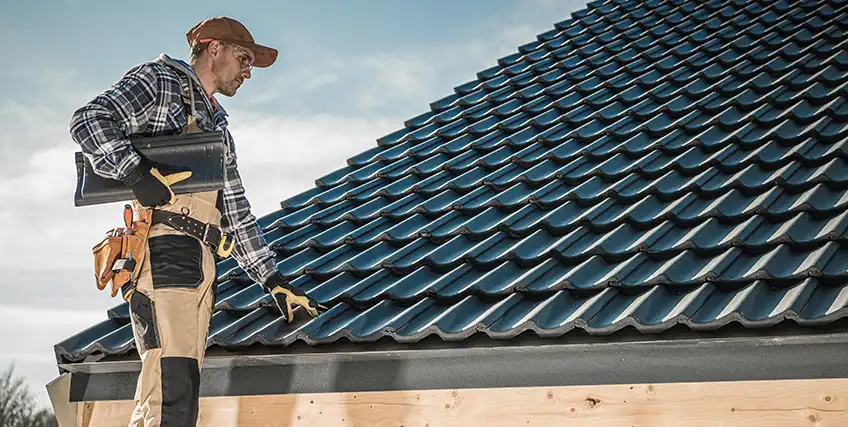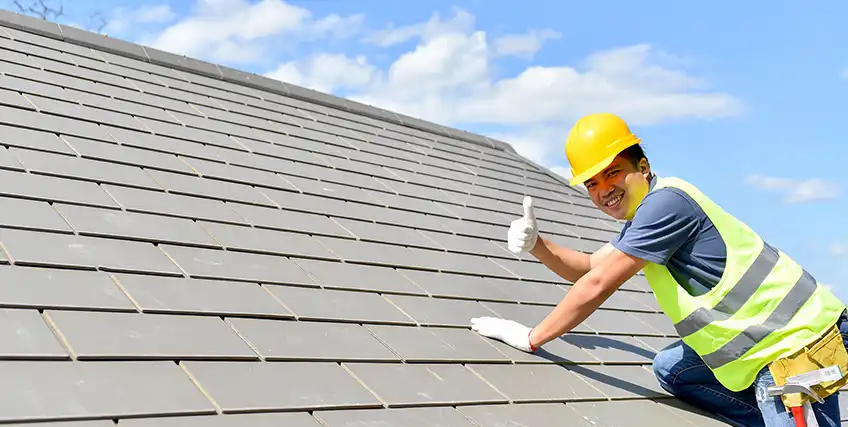Equipment Financing vs. Working Capital Loans for Roofers - What’s Best
May 01, 2025 | Last Updated on: May 05, 2025

Running a roofing business involves more than climbing ladders and nailing shingles. Behind the scenes, contractors juggle a variety of best business financing decisions—especially when it comes to financing. Whether you're replacing aging equipment or dealing with seasonal slowdowns, the right financial tool can mean the difference between growth and stagnation.
Two common options for loans for roofers are long term equipment financing and working capital loans. Each serves a different purpose and choosing the best one depends on your specific needs, business cycle, and long-term goals. Let’s break down how loans for roofers work, compare their pros and cons, and help you decide which one makes the most sense for your roofing business.
Understanding Loans for Roofers: The Basics
What is Equipment Financing?
Equipment financing is a loan used to purchase business-related equipment—trucks, ladders, scaffolding, safety gear, power tools, and even software. This type of loan is typically secured by the equipment itself, meaning the equipment serves as collateral.
Lenders usually finance 80% to 100% of the equipment’s cost, and repayment terms can vary based on the expected lifespan of the asset.
What is a Working Capital Loan?
A working capital loan, on the other hand, is designed to help businesses manage day-to-day operational expenses like payroll, rent, insurance, materials, and utilities. These loans are often short-term, with repayment periods ranging from a few months to a couple of years.
Working capital loans for roofers can be unsecured or secured and may come in various forms—term loans, lines of credit, invoice financing, or merchant cash advances.
When Should Roofers Use Equipment Financing?
Equipment loans for roofers are for those who rely heavily on equipment—trucks, lifts, safety systems, tear-off machines, etc.—can benefit from equipment financing when they need to:
1. Purchase New or Replacement Equipment
If a critical piece of equipment breaks down and repair isn’t cost-effective, equipment financing allows you to replace it without draining your cash reserves.
2. Scale Up
Expanding your operations? New crews need more tools and vehicles. Equipment loans for roofers let you grow faster without tying up operational cash.
3. Maintain Cash Flow
Rather than paying the full cost of new equipment upfront, financing spreads the cost over time, allowing you to keep more money on hand for other needs.
4. Leverage Fixed Monthly Payments
Equipment loans typically have predictable monthly payments, which makes budgeting easier—especially important in a business with seasonal fluctuations.
When Should Roofers Use Working Capital Loans?
Working capital loans for roofers are best when you’re facing a temporary cash crunch or need help managing operational costs. For roofers, this might happen during:
1. Slow Seasons or Bad Weather
Winter or prolonged rain can slow down jobs and delay payments. Working capital loans for roofers can help bridge the gap until business picks up again.
2. Large Project Kick-Offs
Taking on a big job? You might need to pay for materials or subcontractors upfront, before getting paid. A short-term loan can help manage the upfront costs.
3. Payroll and Operating Expenses
You can't delay paying your crew or your lease. Working capital loans can cover routine costs when customer payments are delayed or slow.
4. Marketing and Growth Initiatives
Need to invest in a new website, digital marketing campaign, or local advertising? A working capital loan can fund those efforts and bring in new business.
Side-by-Side Comparison of Loans for Roofers
| Feature | Equipment Financing | Working Capital Loan |
|---|---|---|
| Purpose | Buy/lease roofing equipment | Cover day-to-day expenses |
| Collateral | The equipment being financed | May or may not require collateral |
| Loan Term | 3 to 7 years (depends on equipment) | 3 months to 2 years |
| Interest Rates | Generally lower (secured) | Higher (especially if unsecured) |
| Application Speed | Moderate to Fast | Fast |
| Cash Flow Impact | Fixed payments, longer term | Short-term payments, faster repayment |
| Ideal Use Case | Growth, upgrades, expansion | Smoothing cash flow, emergencies |
Note that terms and rates will vary based on individual application factors.
Pros and Cons of Equipment Financing for Roofers
Pros:
- Preserves cash flow: Spreads out large equipment costs.
- Ownership: You own the asset after the loan is repaid.
- Tax benefits: Section 179 may let you deduct equipment expenses.
- Lower rates: Secured loans often come with better terms.
Cons:
- Requires a down payment: Some lenders may ask for 10–20% upfront.
- Tied to equipment: If you default, the equipment can be repossessed.
- Longer commitment: You’re locked in for several years.
Pros and Cons of Working Capital Loans for Roofers
Pros:
- Flexibility: Use funds for any business expense.
- Fast access: Great for emergencies or quick needs.
- Unsecured options: May not need to put up collateral (depending on lender).
- Helps during slow periods: Smooths out seasonal cash flow dips.
Cons:
- Higher interest rates: Especially for unsecured or short-term loans.
- Shorter terms: Payments may be higher and due more quickly.
- Not for large purchases: Using it for equipment can be inefficient.
Real-World Scenarios
Scenario 1: Equipment Financing in Action
Imagine your roofing business is awarded a large commercial job. To execute it efficiently, you need two new utility trucks and additional safety equipment. Rather than dipping into your operating budget or applying for a general loan, you use equipment financing to buy the necessary gear. The job itself will cover the loan payments, and your existing working capital remains untouched.
Scenario 2: Working Capital Loan Requirements in Action
Let’s say it’s February, and business slows due to heavy snow and low temperatures. Jobs are delayed, but you still need to pay your team, keep the office open, and restock materials for spring. Capital funding for small business can keep you afloat without missing a beat.
Choosing the Right Option: Questions to Ask
1. How long do I need the funds?a. Short-term = working capital loan.
b. Long-term assets = equipment financing.
2. Can I provide collateral?a. Equipment financing uses the equipment itself as collateral.
b. Working capital loans may be unsecured but will have higher rates.
3. What’s my credit like?a. Both loans for roofers consider credit, but some working capital lenders offer funding to businesses with weaker credit (at a cost).
4. How fast do I need the money?a. Working capital loans for roofers are faster to fund.
b. Equipment loans for roofers may take longer but are worth the wait for large purchases.
Final Thoughts on Loans for Roofers
There’s no one-size-fits-all answer. Both equipment financing and working capital loans for roofers serve valuable roles in the business. The key is to align the right tool with the right job.
If your goal is to upgrade or replace essential tools and vehicles, equipment financing is a smart, cost-effective way to grow. But when you need flexibility, quick cash flow relief, or help managing the off-season, a working capital loan for roofers can keep things running smoothly.
Ultimately, smart roofing contractors often use both options at different times, depending on the season, workload, and cash flow. Understanding when to leverage each one helps keep your business climbing—just like your crew on a roof.
FAQs About Loans for Roofers
Which loan is faster – a working capital loan or equipment financing?
A working capital loan for roofers is typically faster to fund than equipment loans. Equipment loans for roofers may take longer but are considered worth the wait for large purchases.
What is a working capital loan for roofers?
A working capital loan helps businesses manage day-to-day operational expenses like payroll, rent, insurance, materials, and utilities. These loans are often short-term, with repayment periods ranging from a few months to a couple of years.
What is an equipment financing loan for roofers?
Equipment financing is a loan used to purchase business-related equipment—trucks, ladders, scaffolding, safety gear, power tools, and even software. This type of loan is typically secured by the equipment itself, meaning the equipment serves as collateral.
Can a roofing business use capital loans for marketing?
If you’re looking to invest in a new website, digital marketing campaign, or local advertising a working capital loan can fund those efforts and bring in new business.
Is capital funding or equipment financing better for long term business needs?
If you’re looking for long-term financing for your assets, equipment financing is a better option than capital funding.




